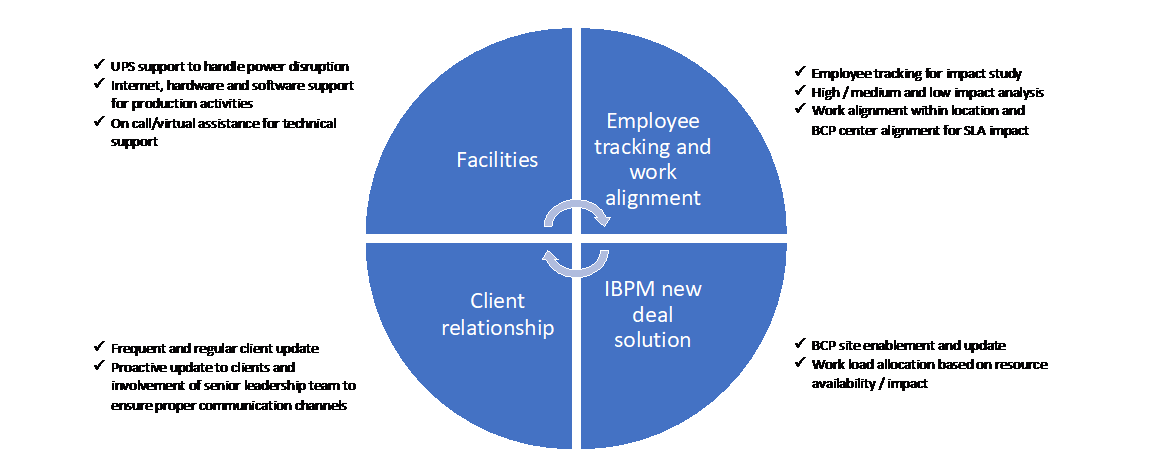Corporate
Dealing with disasters: What happens when your BCP demands another BCP?
In the face of nationwide lockdowns due to the COVID-19 pandemic, all organizations had to invoke their Business Continuity Plans (BCP) to keep the lights on. Even the ones that didn’t have a BCP in place had to go back to the drawing board and create one.
But what happens when another disaster is threatening to strike while still dealing with pandemic-induced chaos? As a cyclone warning loomed large upon the coastal city of Chennai in November, organizations had to embrace a BCP over and above the existing BCP.
While the pandemic was an unprecedented event to handle across the globe, natural disasters, although unpredictable, have had precedence. Think of Hurricane Katrina of 2005 or Hurricane Harvey of 2017 in the US. The havoc caused by these natural disasters cannot stress more the need for a targeted BCP. When dealing with such situations, especially amid an ongoing worldwide crisis like that of COVID-19, preplanning is key.
In general, the purpose of all BCPs is to minimize the disruptive impact of an event on operations, resources, finances, and assets, and to eventually return to Business as Usual (BAU). At a basic level, the tenets of a BCP remain the same, be it for a pandemic or a natural disaster. In particular, though, a BCP drawn for natural disasters must be tailored to suit the specific needs of an organization. It must also be fluid with other BCPs, like that for a pandemic situation.
How we fared
At Infosys BPM, we have had a well-entrenched BCP mechanism across Account, Delivery Centers, and Organization level. Having prepared in advance for such a situation, we could navigate the double whammy of a pandemic and a cyclone warning with minimal or no impact to our client’s businesses while ensuring the safety of our employees.
When the pandemic hit businesses globally, it was an unprecedented situation even for well laid out BCP plans. Our company leaders were quick to recognize and learn from the unexpected nature of the crisis. All other possibilities of unexpected disruptions were also brought into focus simultaneously. Proactive measures were drawn early in August, while we were tweaking and updating our BCP for the pandemic, to include disruptions caused by natural disasters as well. Most actions were taken to have a working model that can be adapted for all disasters.
The preplanning had the following advantages for us when Cyclone Nivar threatened to disrupt operations in Chennai:
- The leadership team was well prepared mentally and operationally to overcome multifold challenges.
- We were equipped with alternate means to overcome the challenges of ensuring business continuity and employee wellbeing, in a scenario where we had to deal with the pandemic also. The learning came from past incidents when a few other major cities were caught off guard even with low-intensity natural disasters.
- Each account or engagement planned the details meticulously, keeping into consideration specific client needs.

BCPs must look at all aspects of a business that could be impacted by emergency scenarios, right from the deal solution stage to delivery of services. Looking at critical processes, sub-processes that need backup; building critical resource pools at the account level; drawing up alternate disaster risk reduction (DRR) sites that are part of BAU for large and key business client segments; putting in place a structured risk management process at all levels.
What we learned
Chennai city was hit by multiple cyclones and cloudburst in 2015 Nov/Dec followed by the Varda cyclone in 2016. The impact during those times was huge with life in the city coming to standstill and businesses heavily impacted. Cyclone Nivar hit the Chennai coast in November 2020 after a gap of four years. The importance of BCP for disaster management had subsequently taken a backseat.
But natural disasters often strike with little or no warning and can have a devastating impact on the economics and operations of organizations. As environmental scientists predict the occurrence of natural disasters to increase in the near future, organizations must read the fine print and tweak their BCPs to address key impacts of a natural disaster.
A few key elements should be identified and analyzed for each business continuity component:
Communication channels:
Transparent and clear communication is essential for effective coordination of a recovery strategy, be it for clients or employees.Data play:
Use data to identify service lacunas that can lead to information blockage in case of a disruption. Safeguard those by planning backups, and provision for restoration.Equipment ready:
Identify equipment suppliers early on to acquire the necessary devices with agility in case of a disruption to avoid downtime.Essential Employees:
Identify and maintain an updated list of minimum staff who will be essential to carry out critical functions. Equip them with contingency plans.Emergency contacts:
Regularly update the contact information of essential services within and outside the organization to ensure accuracy.Supply Chain:
Maintain a list of suppliers and alternate suppliers. Update these regularly, with critical suppliers marked separately. Pre-selected alternate suppliers should be included in all BCPs.
When implemented effectively, a good BCP can not only help organizations sail through unexpected disruptions, but could also be that differentiator in the market. A simple act of communicating honest and regular updates to clients can convince them in favour of you over your competitors, especially at a time when empathy is taking precedence over all other business protocols we have known. Planning well ahead, leveraging all possible options, communicating with all stakeholders, and being prepared for the worst is paradoxically the best we can hope for.






